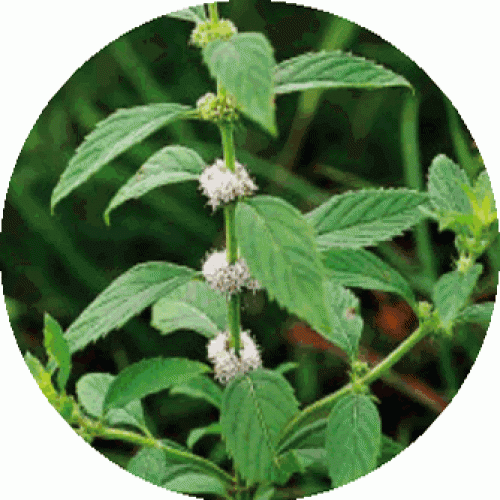Products

Mentha Arvensis (Pudina)

- Botanical Name: Mentha arvensis Linn
- Family: Labiatae
- Flowering and fruiting: June-August
- Parts Used: Leaves
- Distribution: Cultivated throughout plain area of Nepal.
- Method of Extraction: Steam Distillation
Description:
A perennial herb, 60 cm high. Leaves simple, opposite, short stalked, oblong, 2.5-5 cm long, obtusely or acutely serrated. Flowers small, lilac in axillary whorls. Fruits nutlets, smooth.
| Specification of Mentha Arvensis (Pudina) | |
| 1. Organoleptic Properties | |
| Appearance | Slightly thick liquid. |
| Color | Pale yellow. |
| Aroma | Strong, fresh and somewhat bitter-sweet. |
| 2. Physico-chemical Properties | |
| Specific gravity | 0.8940 to 0.9015 at 25° C |
| Optical rotation | (-) 15.5 to (-) 45 at 25C |
| Refractive index | 1.4590 to 1.4750 at 25° C |
| Acid number | 0.3 to 5 |
| Ester number | 3 to 15 |
| Ester number after acetylation | 210 to 255 |
| Solubility | Soluble in 1.2 to 2.5 vol. of 70% alcohol |
| 3. Chemical constituent: | |
| It contains Menthol and menthone | |
| 4. Uses | |
|
|
